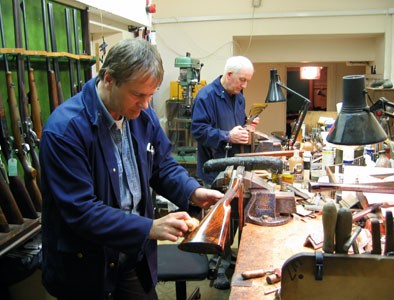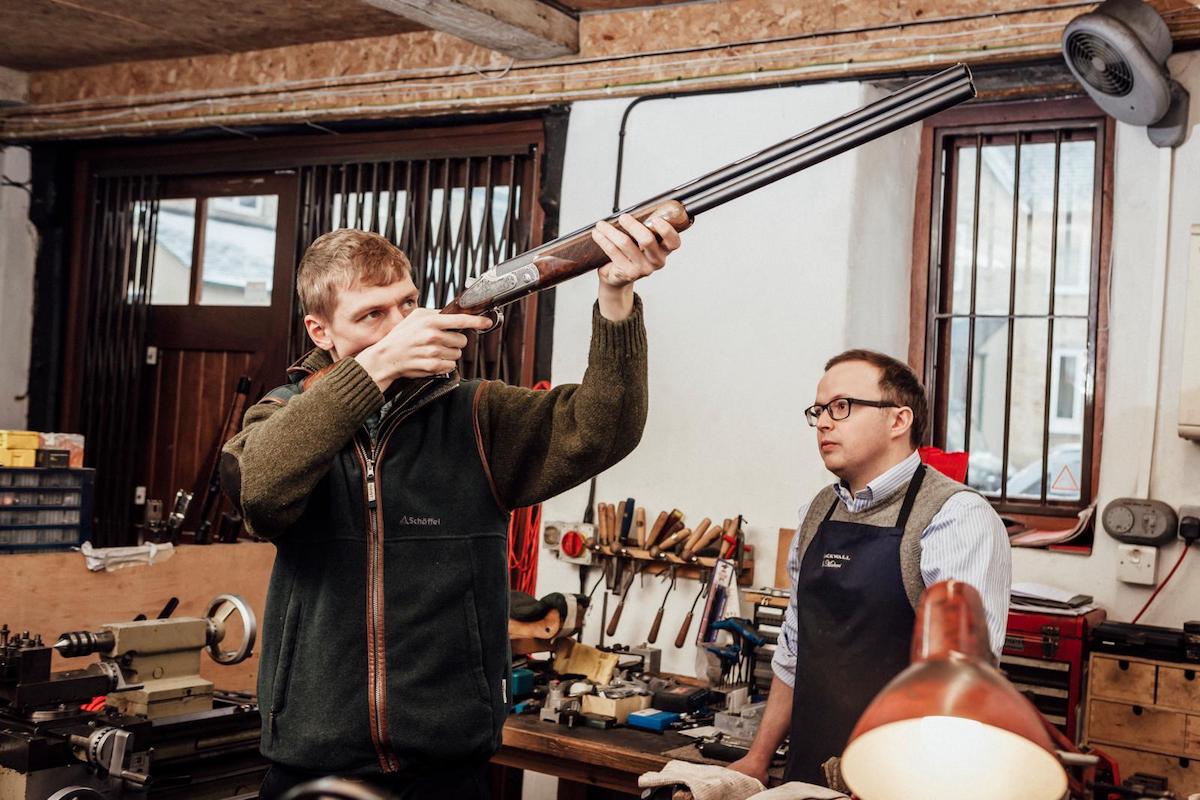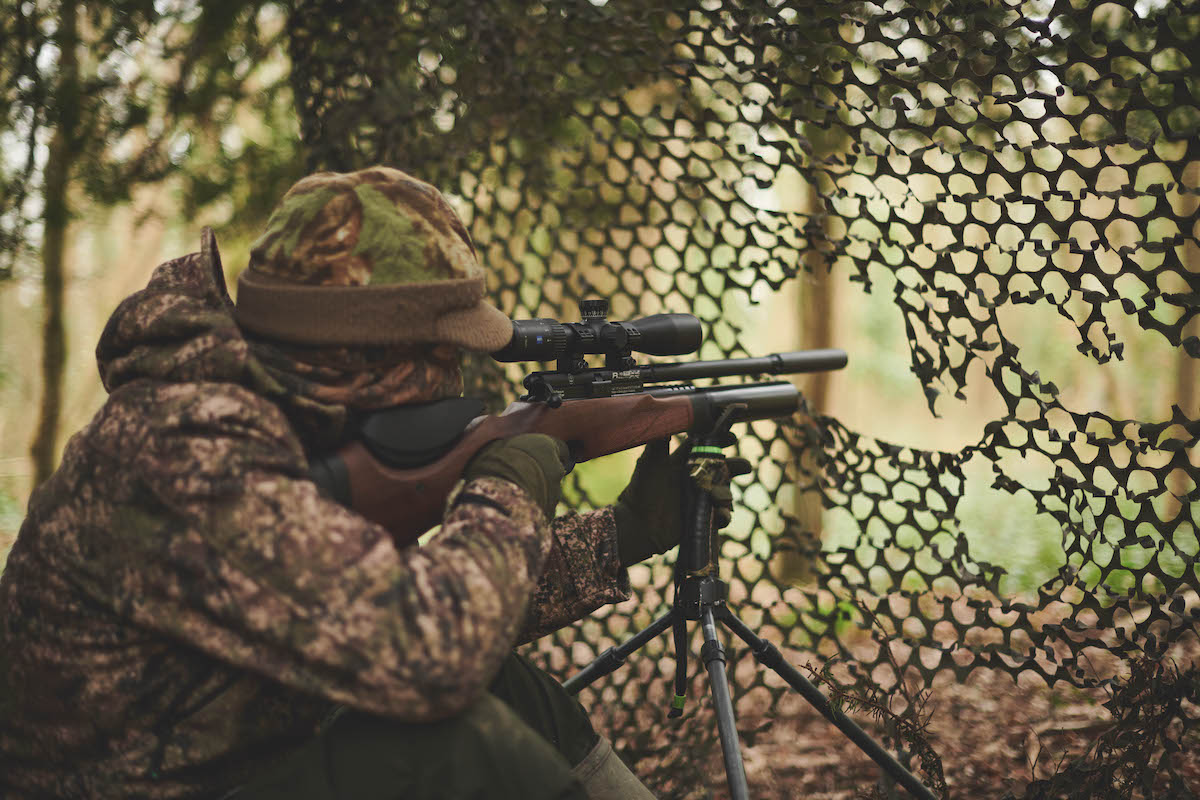Scottish gunsmiths
Scotland boasts a glorious history of invention and engineering, so it is no surprise that during the formative years of the modern shotgun, towards the end of the 19th century, Edinburgh developed a reputation for style and reliability that remains to this day.

However, as with the other regions of the UK, Scotland’s many gunsmiths have been whittled away to a fraction of their original number and the total national output of handmade guns is no more than 50 a year. A high proportion of these come from the workshops of David McKay Brown (Gunmakers) Ltd, owned by the founder David McKay Brown and based just south of Glasgow at Bothwell, in Lanarkshire. David began an apprenticeship with the Glasgow company of Alex Martin in 1957 and completed it at John Dickson & Son of Edinburgh after the two companies merged. As such, the young gunsmith was schooled in the arts of the traditional round action gun, to which he remains a lifelong devotee. Indeed, he sees his current role as perpetuating the famous design and spreading its appeal to a worldwide audience.
He left Dickson in 1967 to establish his own company and by 1974 he was producing round action guns in his own name. Each section of the work is conducted in-house, with the individual actioner, barrel-maker, stocker and lockmaker amassing more than 100 years of experience between them. The firm currently produces 30 sporting guns a year, including round action side-by-sides, which start from £27,000, and over-and-under shotguns, which start from £34,000, as well as double rifles, also in the round action, calibrated to .375 H&H magnum and .470 NE.
“The side-by-side gun is perfect for driven grouse as it is flat-shooting, lightweight and quick to reload,” said David. “This also meets the requirements of partridge shooting in Spain. For higher birds it can be made heavier with longer barrels and a raised top-rib, with straighter stock dimensions for increased elevation and with borings for extreme range with larger shot sizes. It can also be made to a wildfowler’s specification for use with non-toxic shot.” In addition, McKay Brown has years of experience supplying guns in both side-by-side and over-and-under designs for hunting in the US. In recent years, the company has developed an over-and-under gun dedicated to high birds at extreme range. It is fitted with 31in or 32in barrels and bored for down-range pattern quality with larger shot and weighs 7lb 8oz-plus. Precision screw-in chokes can be fitted if required, making the gun more versatile.
“We are confident that not only is this the most efficient mechanical design of over-and-under but also the most elegant. The unobstructed view, which the shooter has of the top barrel and rib, is enhanced by the slender curving fences. Interestingly, we’ve been commissioned to make a fair number of 16-bore over-and-unders recently.”
David is bullish about his position in the Scottish market, marketing his firm as Scotland’s sole gunmaker. Initially, he was reluctant to be involved in this article, saying that there were no true gunmakers in Scotland apart from McKay Brown. “Mine is the only business that makes a gun from start to finish in the country, so I don’t believe the others count. My standpoint has caused controversy in the past but, as far as I am concerned, my competitors are Purdey, Holland & Holland and Boss, because they also do all the work in-house. I make no apologies for that.”
In the little village of Friockheim near Brechin in Angus, you might be surprised to see the prestigious royal warrant on top of the old Clydesdale Bank. The building is now home to the gunmaker Michael Lingard, who makes rifles by appointment to HRH The Prince of Wales. Among other pieces, he made a .243 rifle, commissioned by the Prince, for his son Prince William, who is an accomplished deerstalker.
Michael’s workshops produce a steady stream of five or six new rifles a year, plus another four shotguns. A large percentage of his work is taken up with repairs to rifles, especially the stocks. Michael travels extensively throughout Europe to find the finest quality walnut blanks for his international clients, who demand the highest standards for their Best guns. Michael was initiated into the industry from an early age, as his father worked part-time in a Brechin gunshop. Michael served an apprenticeship with the stocker and actioner Ted Slater, who previously worked for Stephen Grant, before leaving to to set up on his own in 1980.
“I never thought for a second that I would earn a royal warrant when I set out. I am very honoured to hold it and the village seems very proud to have it too. It certainly helps with international sales, though a sizeable chunk of the market is taken up by Scottish buyers, who want to own a well-made Scottish gun. I think there is the same patriotism among English owners of guns by Purdey and Holland & Holland.”
Dickson & MacNaughton survives as a representative of the great names in Edinburgh gunmaking history. The Dickson half of the double act dates back to 1820, when John Dickson & Sons set up shop in the Scottish capital, famously providing a pair of duelling pistols to the poet Lord Byron. By the end of the century, the firm had gained a reputation for quality and style, building its signature round action shotguns as an alternative to the sidelock. By that stage, James MacNaughton had patented his “Edinburgh hammerless ejector” and the two rivals went to court to claim rights for the round action design. It would have been unthinkable then that they would one day join in partnership.
Throughout the 20th century, Dickson bought many of the remaining names in Scottish gunmaking, including Daniel Fraser, Alex Martin, Alex Henry and Thomas Mortimer, until it was taken over itself by MacNaughton. “The names of the past are still kept alive,” explained Gary MacPherson, in the company’s shop in Edinburgh’s New Town. “We still produce guns under each of the old names, though several of these are produced in Italy.” Dickson & MacNaughton also sells handmade rifles, second-hand guns and clothing from its shops in Edinburgh, Dunkeld and Banchory.
The flagship Dickson Round Action (£37,250) and the MacNaughton Bar-in-Wood (£38,775) are still highly sought after. “We sell a number to American clients who use them when they shoot in Scotland,” said Gary. “They think nothing of flying over first to choose the wood and get a fitting at our workshop in the parklands of the Dunkeld Hilton Hotel, where they can also test the gun at the shooting ground. The guns are especially popular too with Edinburgh businessmen who want to shoot a traditional Scottish gun.”
Though there is competition among the different gunmakers in Scotland, Gary believes it never gets too serious. “Many of the gunsmiths who ply their trade in Scotland have worked for rival companies at some stage in their career, so it is all fairly amicable,” he said. “There is no point fighting or cutting each others’ throats. If you give them a favour, you always get one in return.”
Based on the shores of Loch Lomond, Graham Mackinlay is another gunmaker trained in the art of the round action, having served an apprenticeship with ex-Dickson gunsmith Bob Wightman at Edinburgh Gunmakers. “We were just the two of us, so it was a one-on-one apprenticeship, which was invaluable. Though I didn’t get paid for the first six years.”
Nowadays Graham works primarily on repairs to side-by-sides, as well as specialising in the renovation of Damascus barrels. “No job is too small or too big,” he said. “At the moment, in the workshop I have a pair of three-barrelled 20-bore Dicksons, the only pair ever made, but I will as happily take on a boxlock non-ejector.”
The gunmaker believes that there is untapped potential for gunmaking in Scotland, including the renaissance of the famous names from the early part of the last century. “The round action guns made in the 1920s and 1930s in Edinburgh were unrivalled in quality and technical ability,” he said. “We Scots have long been guilty of hiding our light under a bushel. As a nation, we should be making more of these fabulous handmade guns than we currently do.”








